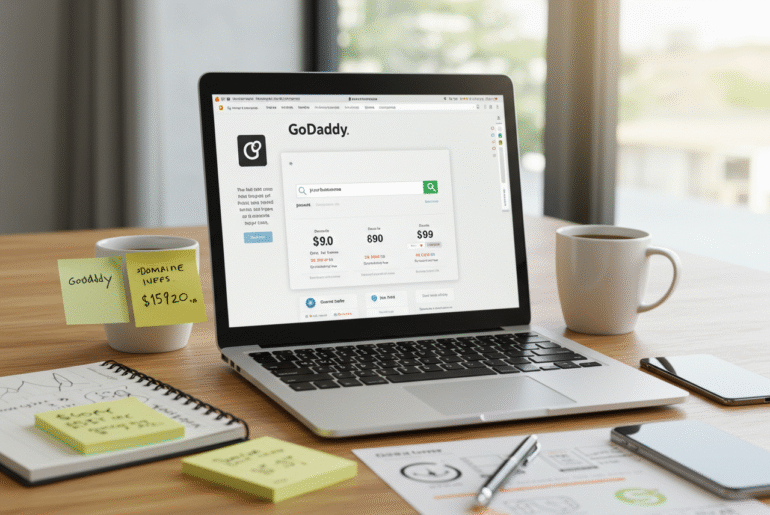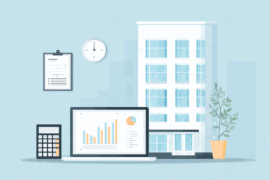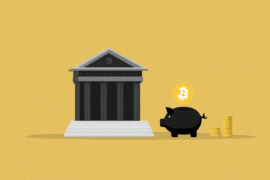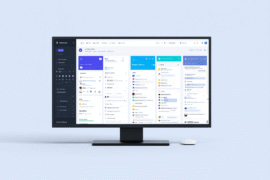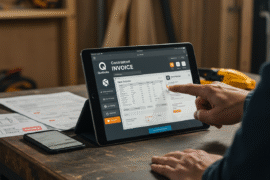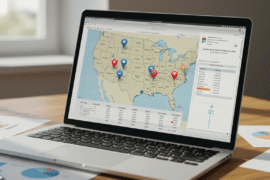This article may contain references to products or services from one or more of our advertisers or partners. We may receive compensation when you click on links to those products or services. Nonetheless, our opinions are our own.
The information presented in this article is accurate to the best of our knowledge at the time of publication. However, information is subject to change, and no guarantees are made about the continued accuracy or completeness of this content after its publication date.
- How Much Does It Cost To Buy a Domain Name?
- Introduction
- Domain Name Costs in the United States
- What Is a Domain Name and Why Does It Matter?
- Typical Price Ranges for Domain Names
- Factors That Influence Domain Name Pricing
- Premium Domains and Aftermarket Sales
- Other Expenses Associated With Buying a Domain Name
- How to Buy a Domain Name
- Conclusion
- Frequently Asked Questions
- Recommended Reads
How Much Does It Cost To Buy a Domain Name?
- A domain name typically costs $10 to $20 per year, but pricing varies depending on the registrar, renewal fees, and optional services.
- Premium domain names are short, memorable, and keyword-rich; these can cost thousands of dollars.
- Popular top-level domains (TLDs), such as .com
.com, are in high demand and usually pricier than newer or alternative extensions. - Budget-friendly domain options include new generic TLDs or country-code TLDs, which offer flexibility and savings.
- Extra features like WHOIS privacy protection, domain transfers, and third-party purchases may raise the total cost.
Introduction
A domain name is the foundation of your digital identity. It directs users to your website and reflects your brand’s purpose. Whether launching a blog, e-commerce store, or business platform, understanding the cost of a domain name helps you plan strategically and stay within budget.
Domain prices can fluctuate based on the registrar, the domain extension, and any additional services. Knowing what affects these costs ensures smarter purchasing decisions.
Domain Name Costs in the United States
In the United States, the average cost to register a standard domain ranges from $10 to $20 annually. If you opt for a rare or desirable name, the price can be higher.
Renewals are often pricier than first-year registration. Add-ons like WHOIS privacy protection and security tools can increase your total cost. Being informed about these expenses helps you estimate your long-term investment.
What Is a Domain Name and Why Does It Matter?
A domain name is the human-readable address used to access a website, like ratherexample.com than a complex numerical IP address. A clear, personalized domain makes it easier for users to find, remember, and revisit your site.
A professional domain builds brand authority and trust. It also improves online visibility, especially when it includes relevant keywords. With more than 368 million domains already registered, securing a concise and brand-aligned name gives you a competitive edge.
Voted "Best Overall Budgeting App" by Forbes and WSJ
Monarch Money helps you budget, track spending, set goals, and plan your financial future—all in one app.
Get 50% OFF your first year with code MONARCHVIP
Typical Price Ranges for Domain Names
Domain name pricing depends on the registrar, TLD, and any extra features. Here’s a sample of first-year pricing from major U.S. registrars using the example domain bakehacks.com:
| Registrar | First-Year Price | Notes |
|---|---|---|
| Hover | $18.99 | Discounts on alternative TLDs like .store |
| GoDaddy | $22.17 | Introductory pricing for new customers |
| Namecheap | $14.98 | Competitive rates with minor discounts |
| Bluehost | $12.99 | Includes optional web hosting services |
| Shopify | $16.00 | Tailored for e-commerce site integration |
Factors That Influence Domain Name Pricing
Domain Extensions (TLDs) and Their Pricing Impact
A domain’s TLD, which is the part after the dot, can significantly affect its pricing. Popular TLDs like .com, .net.com.net, or .orgtypically cost more due to their credibility and familiarity.
Newer generic TLDs (e.g., .tech, .store) may be more or less expensive depending on demand. Country-code TLDs (ccTLDs), like .us or .ca, are region-specific and may carry different pricing based on use case and market.
Domain Length, Keywords, and Popularity
Short, memorable domains are in high demand and frequently command a premium price. For instance, cars.com is more valuable than secondhandusedcars.net.
Domains with high-value keywords like “insurance” or “travel” are in demand because they rank better in search results and attract more visitors. If you already own a desired domain, purchasing it on the aftermarket could significantly increase the price.
Choosing a creative name or lesser-known extension can help reduce costs while still achieving branding goals.
Premium domains are short, keyword-rich, and simple to recall. These domains often sell for thousands or even millions because they closely match common search terms and generate natural web traffic.
Typically, we sell premium domains through the following channels:
- Domain marketplaces (e.g., Sedo)
- Domain auction platforms (e.g., GoDaddy Auctions)
Because many buyers compete for the same names, prices can escalate quickly. We recommend setting a clear budget before entering an auction.
Although the upfront cost is higher, premium domains add long-term value by enhancing brand credibility and SEO performance.
Other Expenses Associated With Buying a Domain Name
Privacy Protection and Add-On Services
WHOIS privacy services hide your personal details in public databases, protecting against spam and identity theft. This service usually costs up to $15 per year.
Additional optional services may include:
- Custom email (e.g., yourname@yourdomain.com): Adds professionalism to your communication.
- SSL certificates: Essential for securing your site, especially for e-commerce.
- Cloud storage: Useful for managing web files or expanding site functionality.
- SEO tools: Enhance search visibility and track website performance.
These features are optional but often essential for growing businesses.
Renewal Fees and Ongoing Costs
Domains must be renewed annually. Renewal rates are typically higher than the initial registration fee.
Many registrars offer discounted multi-year plans. Purchasing a domain for 2 to 5 years upfront can save money and reduce the risk of it lapsing.apsing.
Enabling auto-renewal ensures continuous ownership and avoids disruptions.
Transfer and Redemption Fees
Transferring a domain to another registrar may involve fees. These vary depending on the company and whether it includes renewal charges.
Failing to renew your domain on time can lead to expiration. Recovering an expired domain typically incurs a redemption fee ranging from $80 to $200, plus the standard renewal fee.
Choosing a registrar with transparent pricing and customer support can help you avoid hidden charges.
How to Buy a Domain Name
Purchasing a domain is a straightforward process. Follow these steps:
What You Need to Get Started
- Registrar: Trusted providers include GoDaddy, Namecheap, and Hover.
- Payment method: Most registrars accept credit cards, PayPal, or digital wallets.
- Domain search tools: Use generators to brainstorm name ideas.
Check for added features like privacy protection or bundled hosting at checkout.
Step 1: Search for Available Domain Names
Use a domain search engine to find out if your desired name is available. Incorporate keywords that align with your business or content.
If the name is unavailable, consider alternative spellings, extensions, or synonyms.
Step 2: Compare Prices from Different Registrars
Registrar pricing varies. Review the first-year cost, renewal fees, and included features like email or hosting.
Some providers offer bundles or discounts, making it worth comparing several options.
Step 3: Register and Secure Your Domain
Once you choose a name and registrar:
- Complete the registration form.
- Enable privacy and auto-renewal (optional).
- Link the domain to your website.
Testing the setup ensures everything functions correctly.
Early registration prevents others from taking your domain and helps you establish a professional online presence quickly.
Conclusion
Purchasing a domain name involves more than a one-time fee. Understanding initial costs, renewal rates, and optional add-ons ensures smarter budgeting and long-term success.
Select a name that aligns with your brand, is easy to remember, and fits your financial plan. Working with a reliable registrar and securing necessary features from the start helps you build a strong, lasting web presence.
Frequently Asked Questions
Can I get a domain name for free or at a discount?
Yes. Some platforms offer free subdomains (e.g., yourstore.myshopify.com). Many registrars also provide discounts for first-year registrations, especially for new customers.
Do I keep my domain name forever once I buy it?
No. Domain ownership is leased for a set period, typically 1 to 10 years. To maintain ownership, you must renew before it expires. Longer renewal periods may offer cost savings. Could you please explain why some domain names are priced in the
ain why some domain names priced in the thousands of dollars?
Premium domains are short, memorable, and keyword-rich, making them valuable for branding and SEO. Their popularity drives high demand and resale value. Some have sold for millions.
Are there any extra charges when buying a domain?
Yes. Additional charges may include WHOIS privacy protection, domain transfers, SSL certificates, and premium features. Always review pricing details and terms before completing your purchase.

Reviewed and edited by Albert Fang.
See a typo or want to suggest an edit/revision to the content? Use the contact us form to provide feedback.
At FangWallet, we value editorial integrity and open collaboration in curating quality content for readers to enjoy. Much appreciated for the assist.
Did you like our article and find it insightful? We encourage sharing the article link with family and friends to benefit as well - better yet, sharing on social media. Thank you for the support! 🍉
Article Title: How Much Does It Cost To Buy A Domain Name?
https://fangwallet.com/2025/06/11/cost-to-buy-a-domain-name/The FangWallet Promise
FangWallet is an editorially independent resource - founded on breaking down challenging financial concepts for anyone to understand since 2014. While we adhere to editorial integrity, note that this post may contain references to products from our partners.
The FangWallet promise is always to have your best interest in mind and be transparent and honest about the financial picture.
Become an Insider

Subscribe to get a free daily budget planner printable to help get your money on track!
Make passive money the right way. No spam.
Editorial Disclaimer: The editorial content on this page is not provided by any of the companies mentioned. The opinions expressed here are the author's alone.
The content of this website is for informational purposes only and does not represent investment advice, or an offer or solicitation to buy or sell any security, investment, or product. Investors are encouraged to do their own due diligence, and, if necessary, consult professional advising before making any investment decisions. Investing involves a high degree of risk, and financial losses may occur including the potential loss of principal.
Source Citation References:
+ Inspo
There are no additional citations or references to note for this article at this time.
